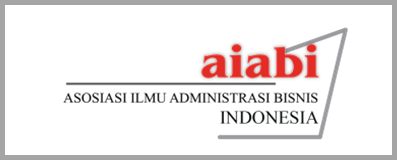Digital as the Future of Indonesia Economy Growth
DOI:
https://doi.org/10.31334/bijak.v17i2.1009Keywords:
Digital Porter Competitiveness of Nation Indonesian FutureAbstract
Indonesia is a country that is currently in a developing country position. Indonesia was predicted to be one of the strongest economies in Asia, especially during the oil boom era where Indonesia has oil reserves that are driving economic growth. However, the presence of oil cannot be used for long-term investment and the consequences of the 1998 monetary crisis prevented Indonesia from reaching its potential. In the future the country's growth will be driven by technology. This research is applied research to use Porter's Competitive Advantage model for the State. The data used are secondary data from trusted institutions for which data is publicly available. The results of this study are that Indonesia has the opportunity to become a new economy power in the future as long as it can utilize the current momentum.
References
Bakan, Ä°., & DoÄŸan, Ä°. F. (2012). Competitiveness of the industries based on the Porter’s diamond model: An empirical study. International Journal of Research and Reviews in Applied Sciences, 11(3), 441-455.
Campello, M., & Graham, J. R. (2013). Do stock prices influence corporate decisions? Evidence from the technology bubble. Journal of Financial Economics, 107(1), 89-110.
Chow, G. C. (2017). Capital formation and economic growth in China (pp. 1186-1221). Brill.
Dutu, R. (2015). Making the most of natural resources in Indonesia.
Frost, J., Gambacorta, L., Huang, Y., Shin, H. S., & Zbinden, P. (2019). BigTech and the changing structure of financial intermediation. Economic Policy.
Guilmoto, C. Z., & Jones, G. W. (Eds.). (2016). Contemporary demographic transformations in China, India and Indonesia. Springer International Publishing.
Krueger, R. A. (2014). Focus groups: A practical guide for applied research. Sage publications.
Mahmood, I. P., & Singh, J. (2003). Technological dynamism in Asia. Research policy, 32(6), 1031-1054.
Maneschi, A. (2008). How would David Ricardo have taught the principle of comparative advantage?. Southern economic journal, 1167-1176.
Minniti, M. (2008). The role of government policy on entrepreneurial activity: productive, unproductive, or destructive?. Entrepreneurship theory and Practice, 32(5), 779-790.
Oosterbeek, H., Van Praag, M., & Ijsselstein, A. (2010). The impact of entrepreneurship education on entrepreneurship skills and motivation. European economic review, 54(3), 442-454.
Pickernell, D., Senyard, J., Jones, P., Packham, G., & Ramsey, E. (2013). New and young firms: Entrepreneurship policy and the role of governmentâ€evidence from the Federation of Small Businesses survey. Journal of Small Business and Enterprise Development, 20(2), 358-382.
Porter, M. E. (2008). The five competitive forces that shape strategy. Harvard business review, 86(1), 25-40.
Smith, E., & Smith Jr, J. (2008). Using secondary data in educational and social research. McGraw-Hill Education (UK).
Spencer, A. S., & Kirchhoff, B. A. (2006). Schumpeter and new technology based firms: Towards a framework for how NTBFs cause creative destruction. International Entrepreneurship and Management Journal, 2(2), 145-156.
Usui, N. (1996). Policy adjustments to the oil boom and their evaluation: the Dutch disease in Indonesia. World Development, 24(5), 887-900.
Utting, P. (2005). Rethinking business regulation: From self-regulation to social control. Geneva: United Nations Research Institute for Social Development.
Downloads
Published
Issue
Section
License

This work is licensed under a Creative Commons Attribution-ShareAlike 4.0 International License
Please find the rights and licenses in Majalah Ilmiah Bijak By submitting the article/manuscript of the article, the author(s) agree with this policy. No specific document sign-off is required.
- License
The commercial use of the article will be governed by the Creative Commons Attribution license as currently displayed on Creative Commons Attribution-ShareAlike 4.0 International License.
2. Author(s)' Warranties
The author warrants that the article is original, written by stated author(s), has not been published before, contains no unlawful statements, does not infringe the rights of others, is subject to copyright that is vested exclusively in the author and free of any third party rights, and that any necessary written permissions to quote from other sources have been obtained by the author(s).
3. User Rights
Majalah Ilmiah Bijak spirit is to disseminate articles published are as free as possible. Under the Creative Commons license, Majalah Ilmiah Bijak permits users to copy, distribute, display, and perform the work for non-commercial purposes only. Users will also need to attribute authors and Majalah Ilmiah Bijak on distributing works in the journal and other media of publications.
4. Co-Authorship
If the article was jointly prepared by more than one author, any authors submitting the manuscript warrants that he/she has been authorized by all co-authors to be agreed on this copyright and license notice (agreement) on their behalf, and agrees to inform his/her co-authors of the terms of this policy. Jurnal Bijak will not be held liable for anything that may arise due to the author(s) internal dispute. Majalah Ilmiah Bijak will only communicate with the corresponding author.
5. Miscellaneous
Majalah Ilmiah Bijak will publish the article (or have it published) in the journal if the article’s editorial process is successfully completed. Jurnal Bijak editors may modify the article to a style of punctuation, spelling, capitalization, referencing and usage that deems appropriate. The author acknowledges that the article may be published so that it will be publicly accessible and such access will be free of charge for the readers as mentioned in point 3.
Every accepted manuscript should be accompanied by "Copyright Transfer Agreement"prior to the article publication.





1.png)




